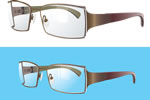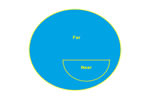Who Needs Prism Eyeglasses
Prism eyeglasses have particular lenses used to treat an eye disorder. Just as the convex lenses are used to correct hyperopia or cylindrical lenses to correct astigmatism, so the prism lenses are used to correct an eye condition called phoria.
Annoying symptoms that may need prism glasses
- Double vision when you are tired
- You miss rows during reading
- Blurry vision with one eye usually
- Headaches
The above phoria symptoms are determined by uncontrolled movements of the eye muscles with the effect of misalignment of the two eyes meaning that they do not focus at the same point.
Eye movements are minimal 1-2 mm, so you not notice if one eye is aligned or not with the other, but you are annoyed by the specific symptoms.
Prism lenses prescription
During an eye examination, to diagnose phorias, there are some specific tests that need to be made the treatment being the prism glasses.
Helpful Tips
- If you have the phoria symptoms that I described above, tell about to optometrist at the consultation, because later at the optical shop, the optician can not help if you don’ t has the correct prescription
- Prism is prescribed together with your diopters (for distance, intermediate or near vision) and will be available in the lenses, not separately
- Make an eye consultation at least once a year, because phoria is evolving in time and the prescription changes
How to recognise the prism eyeglasses
Specific to a prism lenses is that they have a thicker and a thinner part called the base and the top.
These two elements are notable because depending on the direction in which phoria is (out or in) the same the top and the base are set on the lens (by the optometrist).
The lens thickness is decided by the intensity of the eye movement, so prism has also diopters: 1, 2, 3...
The prism on the lens coexist with traditional diopters
For example if a nearsighted person has a phoria also, than the optometric prescription will contain diopters with the minus (-) and additionally prism dioptre, indicating where is the base and where is the top.
Prism can be placed on one of the glasses lens on the eye with phoria, but mainly to be more comfortable to wear, the optometrist split the prism dioptre in two and put a prism in both eyes with the same results.
Prism eyeglasses are to correct eye problems and they are obtained after an optometric consultation, only if it results that you need this type of lens. Prism is not optional and not to be confused with certain treatments as the anti-reflective coating or hardening.
Quick Links - Eyeglass Lenses
Home » Eyeglass Lenses » Prism Eyeglasses
Was this information useful?
1. Like Perfect-Eyeglasses-Guide.com on Facebook.
2. Share this article with your friends:












